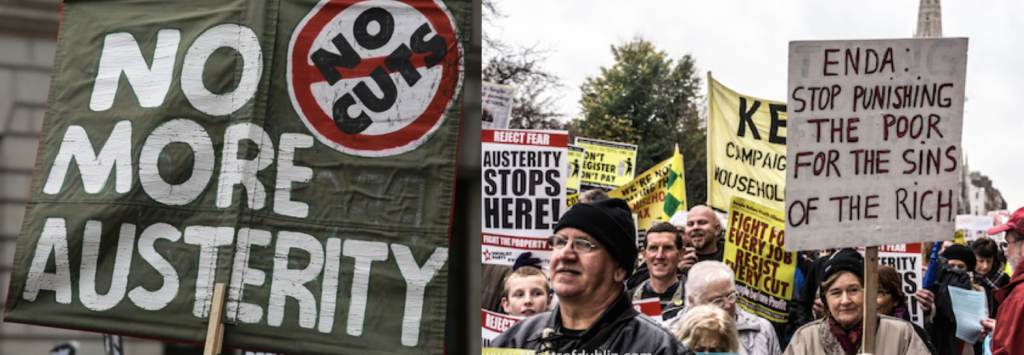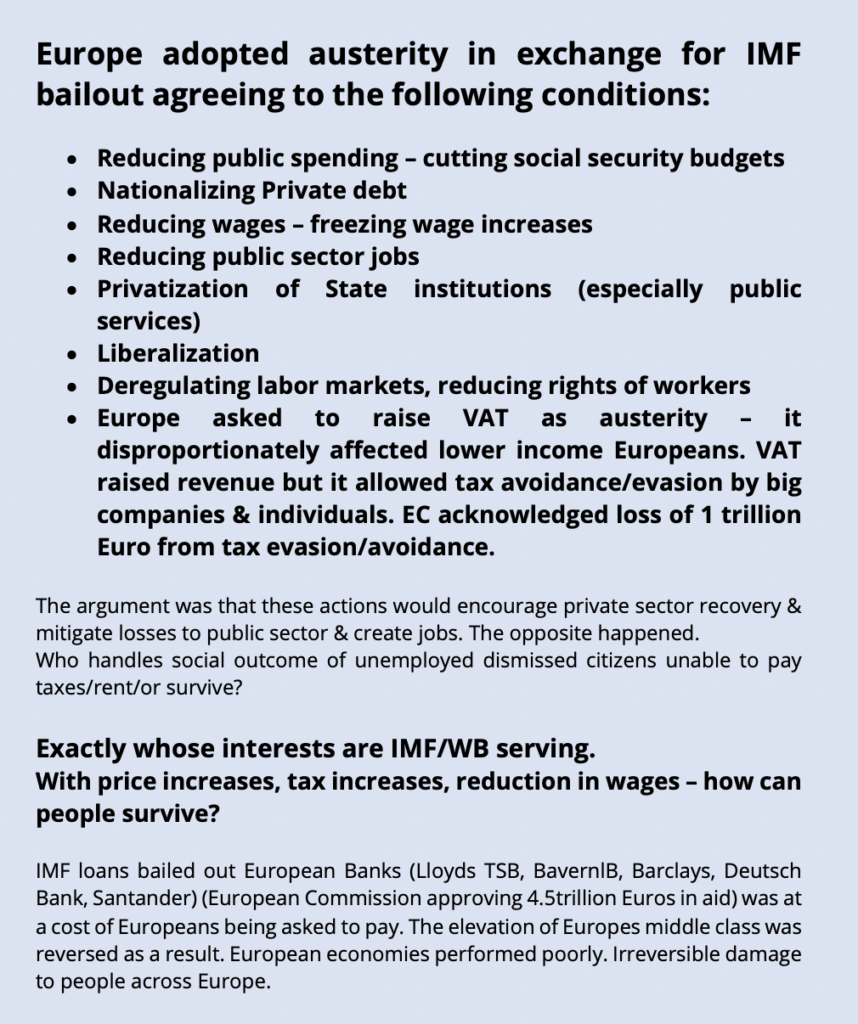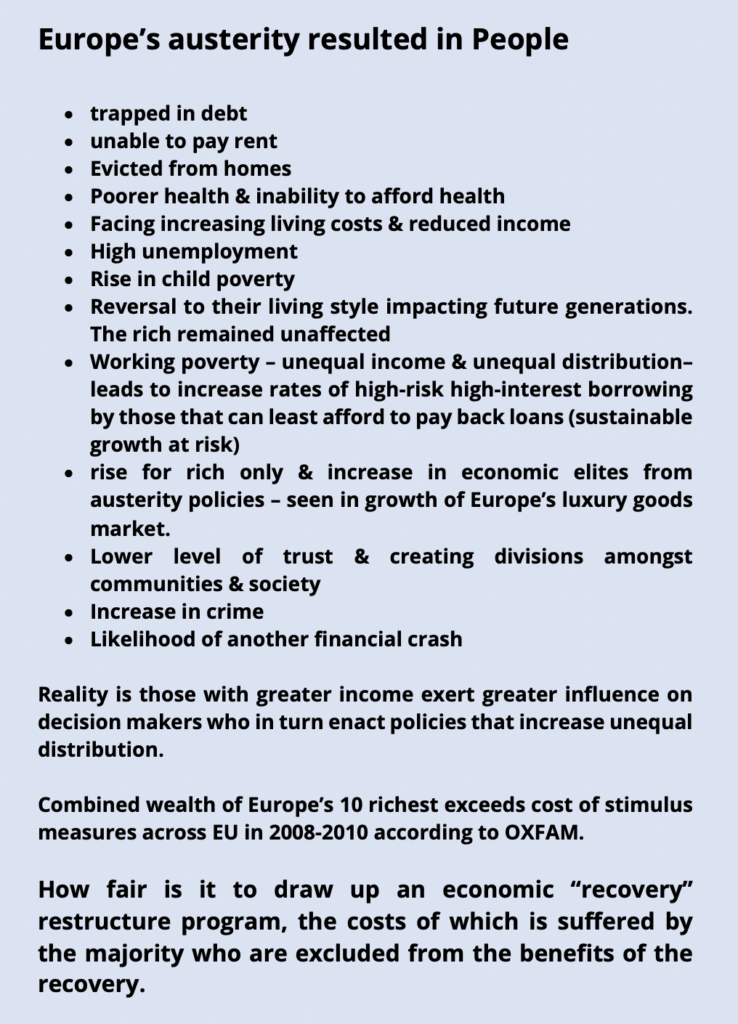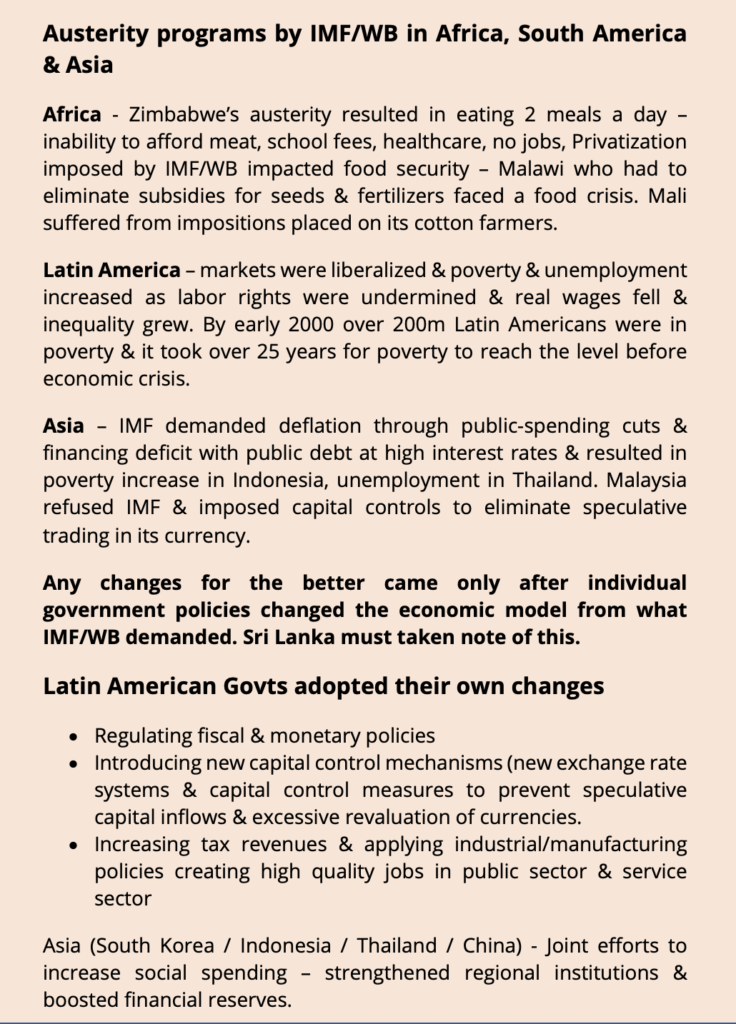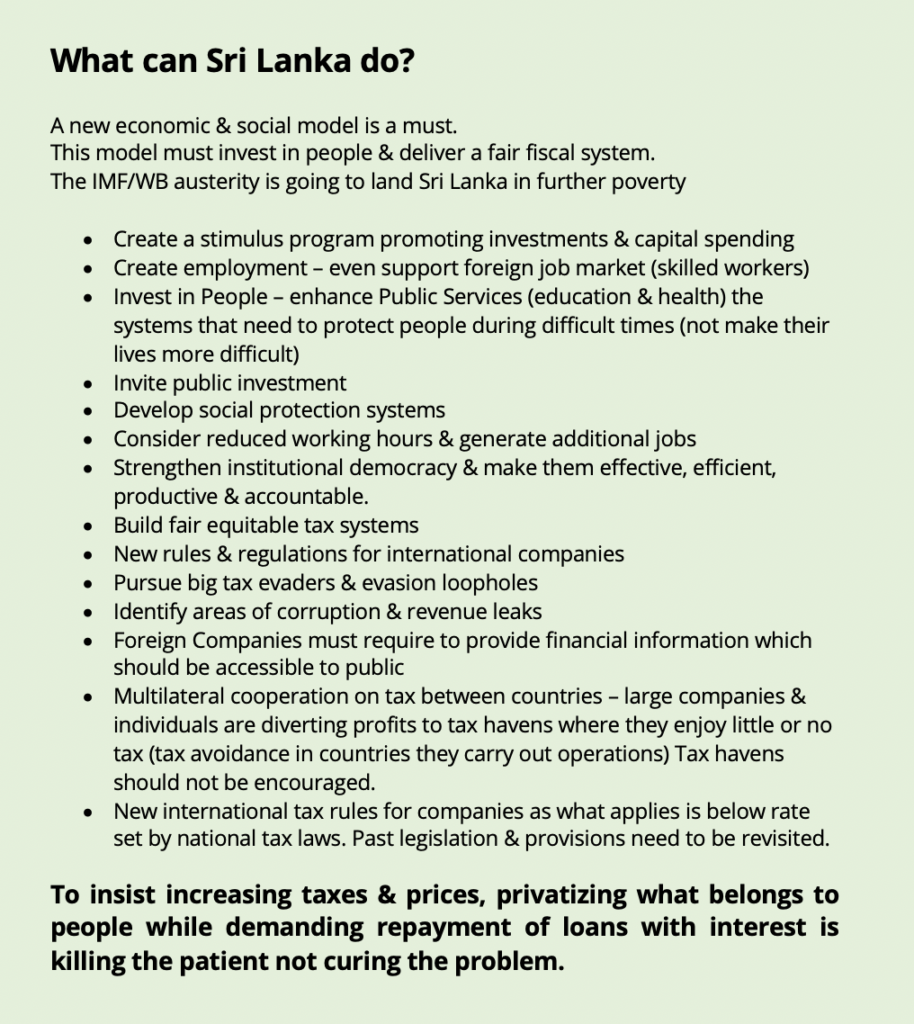චානක බණ්ඩාරගේ
සිංහල ඉතිහාසය විකෘති කිරීම සහ ඒ පිළිබඳව සිංහලයා නිහඬව සිටීම
සිංහලයාගේ සම්භවය දෙමළ බවත්, සිංහලයාට ප්රථමව මේ රටේ ද්රවිඩයන් සිටී බවත්, කුවේණීය දෙමළ බවත්, මහින්දාගමනයට පෙර මේ රටේ ‘දෙමළ බෞද්ධයන්’ සිටී බවත්, මහාවංශය බොරු බවත්, සැමදා යාපනයේ ස්ථිර දෙමළ රජුන් සිටී බවත්, පන්ඩුකාභය රජු දෙමළ බවත්, සීගිරිය කාශ්යප රජුගේ නිර්මාණයක් නොවිය හැකි බවත් වැනි ජනතාවට බොරු අදහස් සහිත කථා පවත්වන එක් ප්රසිද්ධ පුරාවිද්යාඥයෙක් සිටී. මොහුගේ ‘නොනවතින ඉතිහාසය’ වැනි නමකින් හඳුන්වන යු ටියුබ් වැඩ සටහන රටේ ඉතාම ප්රචලිත යු ටියුබ් වැඩසටහනකි.
රටේ අවාසනාවට මොහු පාසැල් ළමුන්ගේ ඉතිහාසය පෙළ පොත් සැදීමේ සම්පාදක මණ්ඩලයේ ප්රමුඛ සාමාජිකයෙකි. මොහුට ස්තුතිවන්ත වෙන්න පාසැල් වල 6, 7, 10 ශ්රේණි වල පෙළ පොත් වල ඇත්තේ සිංහල බෞද්ධයා පහත හෙලන බොරු ඉතිහාසයකි (මොහු සම්බන්ධ නැති 8, 9 ශ්රේණි වල ඉතිහාසය පෙළ පොත් වල කිසිදු වැරදි ඉතිහාසයක් නොමැත).
සිංහල ජාතිය ආරම්භ වුයේ උතුරු ඉන්දියාවෙන් ශ්රී ලංකාවේ තම්බපන්නියට ආ විජය කුමරු ගෙන් නොව මීට අවුරුදු ලක්ෂ ගණනකට උඩදී ශ්රී ලංකාවට යාලෙන් ගොඩ බට හෝමෝ සපියන් වරුන්ගෙන් වශයෙන් ඉතිහාසය පෙළ පොත් වෙනස් කිරීමට හැකි වීම තමන්ගේ පුද්ගලික ජයග්රණයක් ලෙස මොහු පාරම් බායි.
ශ්රී ලංකාව සැමදාම ඉන්දියාවේ කොටසක් බවත් එය ඉන්දියාවෙන් ගැලවුනේ මීට වසර 7000 ට පෙර (එනම්, ඉතාම මෑතදී) බවත් මොහු නිතර කියයි.
මොහුගේ පරස්පර විරෝධී ඉතිහාසය ගැන තවත් කුමන කථාද?
නාරාහේන්පිට මිල්කෝ කම්හලෙන් දිනපතා වාගේ කල් කිරි බෝතල් පිට කරයි. ඒ අයුරින්, මොහුගේ යු ටියුබ් වැඩ සටහනෙන් සතිපතා වාගේ ශ්රී ලංකා ඉතිහාසය ගැන නවතම කතාවන් පිටකරයි.
එය ඉතිහාස ෆැක්ටරියකි. විශේෂත්වය නම් ඔහු අද කියන ඉතිහාසය නොවෙයි ඊළඟ සතිවල/මාසවල කියනුයේ.
මානව පරිනාමයේදී මීට වසර ලක්ෂ ගණනකට පෙර නියැන්ඩතල් (මනුෂ්යම නොවේ) හෝමෝ සපියන් (මනුෂ්ය) බවට පත්වුයේ නැගෙනහිර හෝ දකුණු අප්රිකාවේදීය. ඔවුහු ආසියා මහාදිවීපයටද, ඒ අයුරින් ලොව පුරාද පැතිර ගියහ.
හෝමෝ සපියන්වරු ජාතියක් (nationality) ලෙස ගණන් ගත නොහැක. ඇමීබා වැනි එක් සෛලයකින් ජීවය සැදුනා නම් (පරිනාමවාදයට අදාලව), හෝමෝ සපියන් වරුන්ගෙන් පුර්ණ මනුෂ්ය ප්රජාව බිහි විය.
තමන්ගේ ජාතියේ ආරම්භකයා හෝමෝසපියන් වරු බව උජාරුවෙන් පවසන, තම රටේ දරුවන්ට ඉතිහාසය පෙළ පොත් මඟින් ඒ බව කියාදෙන, ලොව එකම ජාතිය සිංහලයා විය හැකියි. ඒ මෙම මහාචාර්ය/පුරාවිද්යාඥයාට ස්තුති වන්ත වෙන්නටය.
මෙම නව හෝමෝ සපියන් සොයා ගැනීම ගැනීම සහ එය පාසැල් ඉතිහාසය සිසුනට එලෙසින් ඉගැන්වීම ගැන බෙදුම්වාදීන් ඉතා සතුටින් සිටිත්.
හුදු මිත්යාවක් වන රාවණා ශ්රී ලංකාවේ රජ කෙනෙක් ව සිටී බව කියන උගත් බෞද්ධ භික්ෂුන්වහන්සේලා ද එමටය. දෙමළ ආධිපත්ය ඇති රුපවාහිනි මාධ්ය (ශ්රී ලංකාවේ ප්රධානතම පුද්ගලික මාධ්ය මේවාය), සංකර FM නාළිකා ඉතා රසවත් වැඩසටහන් මඟින් මේ අදහස ජනතාව තුලට කාවද්දන ලදී. එසේ කරන ලද්දේ අප රටේ ඇති පැහැදිලි ඉතිහාසය අවුල් කිරීමටය. ද්රවිඩ අන්තවාදීන්ට නව අත් වැලක් සැපයීමටය.
රාවණා ද්රවිඩ බව මුළු බටහිර ලොවම, දකුණු ඉන්දියාවම සහ උතුරු ඉන්දියාවේ ඇතැම් අය පිළිගන්නා බව රාවණා සංකල්පය උච්ච ලෙස ප්රචලිත කරන අපේ ගරුතර සංඝයාවහන්සේලා සැලකීමට නොගන්නේ මන්ද?
ත්රිකුණාමලයේ කෝනේෂ්වරන්, නාගධීපයේ හින්දු කෝවිල් දැන් උග්ර ලෙස රාවණා වෙනුවෙන් කැප වුනු හින්දු දේවාලයි.
දැන් ශ්රී ලංකාවේ වතුකරයේ දෙමළ අයද මේ දේම කියති – රාවණා තමන්ගේ කෙනෙක්ය කියා.
මේ නිසා ඇතිවිය හැක්කේ ඝට්ටනයකි, රාවණා ගේ අයිතිය උදෙසා – මේ රටේ සමගිව ජීවත්වන සිංහලයන් සහ ද්රවිඩයන් අතර. මෙවැනි ඝට්ටනයක් අපට අනවශ්යය.
වර්ෂ 1000 එහා පමණ සිට මේ රටේ පිළිගත් මතය වුයේ රාවණා යනු මහාභාරත ග්රන්ථයේ රාමායණය පරිච්චේදයේ එන හුදු කථාවක් පමණක් ලෙසිනි. අප කළ යුත්තේ එම පදනමේම සිටීමයි.
බලගතු ඉන්දියාව රාවණා ගැන මොන අර්තකථන දුන්නත් අප ඔවුන් සමඟ යා යුතු නොවේ. අපටම ආවේනික වූ සිංහල බෞද්ධ ඉතිහාසයක් ඇත. අපේ ප්රාරම්භකයා විජයයි.
විජය රජු වැනි සල්ලාල ‘සෙල්ලක්කාරයෙක්ගෙන්’ සිංහලයා පැවතෙන්නේය යන්න පිළිගැනීම අපට මදි කමක් ලෙස බොහෝ සිංහලයෝ දැන් සලකත් (ඇතැම් සංඝයාවහන්සේලා පවා. මේවා කලින් කී රුපවාහිනි මාධ්ය, සංකර FM නාළිකා විසින් අප තුලට දමන ලද විෂම අදහස්ය.
රටක ඉතිහාසය එක් එක් කෙනාට උවමනා විධියට වෙනස් කර ගත හැකි දෙයක් නොවේ.
නවීන සුදු ඕස්ත්රේලියාව බිහි කිරීමට පුරෝගාමී වුයේ මහා බ්රිතාන්යයෙන් එම රටට යවන ලද සිරකරුවෝය, 1788 පමණ සිට. සිඩ්නි, මෙල්බර්න්, බ්රිස්බන් නගර තනිකරම බිහි කලේ මේ අයයි. ඔවුන් පැමිණීමෙන් වසර 50 ට පමණ පසුවය සිරකරුවන් නොවන බ්රිතාන්යයන් ඕස්ත්රේලියාවට යවනු ලැබුවේ. නමුත්, තම රට ගොඩ නැගු මුතුන් මිත්තෝ බ්රිතාන්යයෙන් එවන ලද සිරකරුවන් බව සුදු ඕස්ත්රේලියානුවෝ අදත් සතුටින් පිළිගනිත්. සත්ය වසන් කිරීමට ඔවුනට නුවමනාය.
රාවණයෙක් මෙහි සිටියේ නම් එය විජය ඒමට වසර 2000 ට පමණ පෙරය.
මේ නිසා, සිංහලයාට වඩා මේ රටේ ද්රවිඩයන් පැරණිය යන විග්නේස්වරන්ගේ මතය ස්ථාපිත කිරීම සඳහා ද්රවිඩ අන්තවාදීහු රාවණාව භාවිතා කරති.
පසුගිය 2022 දෙසැම්බර් 14වෙනිදා ජනාධිපති කාර්යාලයේදී ‘ද්රවිඩයන් මේ රටේ වසර 3000ට වඩා පැරණියයි’ යනුවෙන් ගල් පැලෙන බොරු විග්නේස්වරන් උජාරුවෙන් ඉංග්රීසියෙන් කීවේ රටේ බොහෝ ව්යවස්ථාදායකයන් ඉදිරියේය. එනම් ‘නුභාලාට වඩා අයිතියක් අපට මේ රටේ ඇත යන්නය’. මේ ප්රකාශ මුළු ලොව පුරා විහිදී යනු ඇත.
ඔහුගේ බොරුව ඉංග්රීසි බසින් නිවැරදි කිරීමට පිට කොන්දක් ඇති එකම මන්ත්රීවරයෙකු හෝ එතන නොසිටීම කණගාටුදායකය.
මේ සමුළුව පාර්ලිමේන්තුවේ නොපවත්වන්නේ ඇයි?
රාවණා ද්රවිඩය යන ලෝක මතය ඔවුනට වාසි බව ඔවුන් දනිති.
බුදු රජාණන් වහන්සේ ශ්රී ලංකාවට වැඩම කරන විට මෙහි සිටියේ යක්ෂ, දේව, නාගයෝය (කුවේණි යක්ෂය). මේ තුන් කොටස හෙළයන්ය. වසර 40,000ට පෙර මෙහි සිටී බවට සාක්ෂි හමු වී ඇති බලන්ගොඩ මානවකයා ද හෙළයෙකි.
මේ හෙළයන් විජයගේ සිංහ කාණ්ඩය සමඟ මුසුවී සිංහල ජාතිය බිහි විය (සිංහ + හෙළ = සිංහල).
විජය සහ කුවේණිගේ දරු දෙදෙනා (ජීවහත්ත සහ දිසාලා) ගෙන් වැදී පරපුර පටන් ගැනිණ යයි මහාවංශය දක්වයි. මේ දෙදෙනා රාජ්ය බලය අල්ලා ගැනීම සඳහා සටන් නොකළහ; වැද්දන් ලෙසම මැරී ගියහ.
විග්නේස්වරන් න්යායට අනුව නම් මේ සියල්ලෝ (හෙළයෝ සහ වැද්දෝ) ද්රවිඩ විය යුතුය.
සිංහලයා බිහිවුයේ විජයගෙන් නිසා රාවණා සිංහල නොව හෙළයෙක් බව අප කීවත් ජාත්යාන්තරය එය පිළි නොගනී.
ලොව පිළිගත් විකිපීඩියා වෙබ් අඩවිය මෑතකදී සඳහනක් යොමු කර ඇත්තේ ලොව මෙතෙක් සිටි භක්තිවන්තම ශිව භක්තිකයා ශ්රී ලංකාවේ රාවණා රජු කියායි, එනම් රාවණා ද්රවිඩයෙක් බවයි. රාවණා විෂ්ණු දෙවියන්ගේ දොරටුපාලකයා බව ද වීකිපීඩීයා සඳහන් කරයි. BBC, Encyclopedia of World History, Oxford Dictionery ද මේ මතයම දරත්.
‘සිංහලයා මෝඩයා කැවුම් කන්න යෝධයා’ කියා රොබර්ට් නොක්ස් කීවේ නිකමට නොවේ:
නැව් 9ක් මඟින් ශ්රී ලංකාවට පැමිණි අල්මේදා ට කිසිම යුද්ධයක් නොකර මුළු රටම (කන්ද උඩරට හැර) පෘතුගාලයට හිමි කර ගැනීමේ උපක්රමය ක්රියාත්මක කිරීමට ගත වුයේ දින කිහිපයක් පමණි.
කෝට්ටේ රජුගේ එම අමන තීරණය නිසා මුළු රටම වසර 150ට එහා කාලයක් ප්රතිකාල් වරුන්ගෙන් දරුණුම ලෙස බැට කෑය. අපේ බුදු දහමට ප්රතිකාලුන් තරම් ප්රහාර එල්ල කල වෙනත් අධිරාජ්යවාදී පාලනයක් නොවීය (ආදී දෙමළ ආක්රමණිකයන් ද අපේ බුදු දහම විනාශ කිරීමට කටයුතු කළහ).
ලංකා ඉතිහාසය පිළිබඳව ලියවූ එක් පැරණි ග්රන්තයක මෙසේ පළවේ:
අකාරුණික ලෙස රජ මාලිගාවට ඇතුළුවූ මොවුහු (පෘතුගීසින්) රජුන්ගේ පරම්පරාගත නොයෙක් රත්න ජාති බලාත්කාරයෙන් පැහැර ගත්තෝය. රාජ්ය භාණ්ඩාගාරයන්හි පමණක් නොව ධර්මපාල රජුගේ යහන් ගබඩාවලටද වැද අගනා භාන්ඩ පැහැර ගත්හ. පෘතුගීසි ආණ්ඩුකාරයා ගේ වස්තු ලෝභය කෙතෙක්ද? යත්-රතු කැට ආදී මැණික් වර්ග පමණක් නොව පඩික්කම් පවා පැහැර ගත්තේය. මේ පැහැරගත් වස්තුවේ වටිනාකම රන් පගෝදි ලක්ෂ අටකට අධික වේ යයි තත්ත්වඥයෝ කීහ.”
…. නොරෝඥ නමැති ආණ්ඩුකාරයා සීතාවක යුද්ධය පිළිබඳව වූ ගිවුසුමේ සඳහන් ඉතිරි මුදල වූ රන් පගෝදි 20,000 නැවත නැවතත් ඉල්ලීය. ධර්මපාල රජු ධනයෙන් හීන ව සිටි හෙයින් එය ගෙවාගත නොහැකි විය.
…. සපුමල් කුමාරයා පෘතුගාලයට සිරභාරයට යැවීමට සුදානම් වන බව දැන හෙතෙම තම රන් හව්ඩිය විකුණා පගෝදි 500ක් ගෙවා ඉතිරි මුදල අවුරුද්දකින් දෙන බවට පොරොන්දු විය.
පෘතුගීසින් එලෙව්වේ ලන්දේසින්ගේ සහාය ලබා ගෙනය. ‘ඉඟුරු දී මිරිස් ගත්තා’ කියා 2 රාජසිංහ රජු (1634 – 1687) පසුව කීය. ඒ කීවේ ලන්දේසීන්ගේ හපන්කම් නිසාය.
රාවණා ඇල්ල, රාවණා කන්ද, රාවණා දේවාල වැනි නම් වලින් ස්ථාන ඇත. මේවා මෑතකදී දමන ලද නම් විය හැක. කෙසේ වෙතත්, රාවණයෙක් මේ රටේ සිටියේය යන්න සනාථ කෙරෙන කිසිම පුරා විද්යා සාක්ෂියක් මේ දක්වා හමුවී නොමැත. ඒ නිසාය රාවණාවාදීන් කාශ්යප රජ විසින් තනන ලද සීගිරිය රාවණාගේ නිර්මාණයක්ය යන බොරුව ප්රචාරය කරනුයේ.
බුදුරාජාණන් වහන්සේ උපන්නේ දඹදිව නොව ශ්රී ලංකාවේය යන අසත්ය මතයක් ගොඩ නඟමින් සිටින පිරිසක් ඇත. මෙය අප සම්බුදු අමා මෑණියන්ට ද කරන අපහාසයකි. ඉන්දියාව, නේපාලය වැනි මිත්ර රටවල් තරහ කර ගැනීමේ උත්සහයක්ද විය හැක.
මෙම මහාචාර්ය/පුරාවිද්යාඥයා අසත්යක් වූ රාවණා සංකල්පය පිළිනොගන්නා අතර බුදුන්ගේ ශ්රී ලංකාවේ උපත සත්යයක් යන මතයේ නොසිටින කෙනෙක් බවයි මෙම ලියුම්කරුගේ දැනුම.
ශ්රී ලංකාවේ තරම් ඉතිහාසය ඉතා හොඳින් ග්රන්ථාරූට කරන ලද වෙනත් කිසිම රටක් ලොව නැතැයි කිවේ 20වෙනි ශත වර්ෂයේ මුල් භාගයේදී පොන්නම්බලම් රාමනාදන් මහතාය.
නමුත් මෙම මහාචාර්ය/පුරාවිද්යාඥයා (සහ ඔහුගේ අනුගාමික නුතන ඉතිහාසඥයන්) උත්සහ දරන්නේ එම පැහැදිලි ඉතිහාසය අවුල් ජාලාවක් බවට පත් කිරීමටය. එහිදී, අපේ දරුවන් නොමඟ යැවීමට තැත් කිරීම සමාව නොදිය හැකි වරදකි.
මොහු පවසන්නේ ලොව සියල්ලන්ටම පෙර වාගේ මීට වසර 49000ට පෙර වී වගාව පටන් ගත්තේ අපයි (නැත චීනයයි, (යකඩ සොයා ගැනීම සිදු කලේ අපයි (නැත චීනයයි), ශ්රී ලංකාවේ සිංහයෝ සැරි සැරූහ (මෙය සිංහලයා යනු සිංහබාහුගේ පරපුරය යන විශ්වාසය බිඳ හෙලීමට ගොතන ලද බොරුවක් විය යුතුය), මීට වසර දස දහසකට පමණ පෙර සිංහලයෝ හෝර්ටන් තැන්නේ බාර්ලි, ඕට්ස් වැවුහ (මේවා වගා කිරීම ආරම්භ වුයේ ඊජිප්තුව, වර්තමාන ඊශ්රායලය වැනි ප්රදේශ වල දැනට වසර 8000 කට පමණ පෙරය). මෙවැනි බොරු විශ්වාස කරන සිංහලයාද උනන්දුවෙන්, ප්රීති ප්රමෝදයෙන් ඔහුට සවන් දෙත්.
මොනයම් අහේතුවකට වසර 2500කට වඩා පැරණි අපේ ඉතිහාසය දැන් අපට මදී වී ඇත. අන් සියළු රටවලට වඩා අප ශ්රේෂ්ට ව සිටියෙමුයි යන මිත්යාවක් ජනතාව අතර පතුරවමින් අප මෙතෙක් පිළිගත් ඉතිහාසය කසළ ගොඩට දමමින් සිටින්නෙමු. ඒ සඳහා ඇතැම්විට රාජානුග්රහය ද ලැබී තිබේ.
මේ නිසා, මෙතෙක් මුළු ලොවම පිළිගත් අපේ ශ්රේෂ්ට ඉතිහාසයට අප විසින්ම පහර දී ඇත්තෙමු
මෙයින් වන්නේ තියෙන ඉතිහාසයත් අපට නැතිවී යාමය.
ප්රභාකරන්, ඇන්ටන් බාලසිංහම් හැකි තරම් උත්සහ කලේ මේ දේ කිරීමටය. අද දෙමළ බෙදුම්වාදීන් උත්සහ කරන්නෙත් මේ දේමයි.
සිංහලයන් වශයෙන් අපගේ උරුමය අනන්යතාවය අපට ලැබී ඇත්තේ වසර 2,500 ඉක්මවා යන අපේ ප්රෞඩ ඉතිහාසයෙනි. මේ බොරු ඉතිහාස කථා නිසා අද එය ලෝක වාසීන්ගේ පවා සැකයට ලක්වීමට පුළුවන.
ඉතිහාසය/පුරාවිද්යාව පිළිබඳව නව සොයාගැනීම් ඇත්නම් ඒවා සනාථ කරන විධිමත් ක්රම වේද තිබේ. ‘Peer review’ නැමති සිද්ධාන්තය තුලින් ලෝකයේ පිළිගත් ඉතිහාසඥයන්/සඟරා/ග්රන්ථ ඒවා පිළිගත යුතුය. අප දන්නා පරිදි මොහුගේ නව/නුතන සොයාගැනීම් කිසිවක් ජාත්යාන්තරය විසින් පිලිගෙන නොමැත. අප දන්නා පරිදි, අප හිතවාදී, අසල්වාසි ආසියානු රටක පවා පිළිගත් එක් ඉතිහාසඥයෙක්/පුරාවිද්යාඥයෙක්වත් මොහුගේ අති මහත් වූ මෙම නව සොයාගැනීම් කිසිවක් පිළිගෙන නැත,
තමන්ද මුලිකවම සම්බන්ධව සකස් කරන ලද නව පුරාවිද්යා ජාතික ප්රතිපත්තියක් දැන් ඇති බවත් එහි මෙසේ ඇති බවත් මෙම මහාචාර්ය/පුරාවිද්යාඥයා උජාරුවෙන් මෙසේ කියයි:
‘නවප්රතිපත්ති යටතේ විදේශිකයන් මෙහි කරන පුරා විද්යා ගවේෂණ අපේ අධීක්ෂණය යටතේ පවත්වා ගෙන යාම නිසා ඒවායේ කර්තෘත්වය ඇත්තේ විදේශිකයාට නොවේ. විදේශිකයා ශ්රී ලංකාවේ පිළිගත් පුරාවිද්යාඥයයෙක් යටතේ වැඩ කල යුතුයි. විදේශිකයා ඔහුගේ මුදල් රැගෙන පුරාවිද්යා කටයුතු සඳහා මෙරටට පැමිණිය යුතුයි. අපෙන් අවසර ලබා ගත යුතුයි. අපේ ශිෂ්යයන් පුහුණු කල යුතුයි. ඔහු යන විට ඔහුගේ සියළු තාක්ෂණික උපකරණ ශ්රී ලංකාවට දී යා යුතුයි.‘
මෙවැනි පුරාවිද්යා ප්රතිපත්තියක් තිබෙන තාක් එකදු ලොව පිළිගත් විදේශ පුරාවිද්යාඥයයෙක් ගවේෂණ කටයුතු සඳහා මෙරටට පැමිනේද? මෙම ලියුම්කරු දන්නා පරිදි විදේශිකයන්ට මේ රටේ පුරා විද්යා ගවේෂණ සඳහා අවසර ඉල්ලීමේ අධීක්ෂණයනටද මෙම මහාචාර්ය/පුරාවිද්යාඥයා සම්බන්ධය (මෙම දැනගැනීම සමහර විට වැරදි වියහැක).
මේ ජාතික ප්රතිපත්තිය සකසා ඇත්තේ ඔවුන්ගේ මෙරටට ඒම නැවත්වීමට නොවේද? ඔවුන් පැමිණ මේ අයගේ ‘බොරු සොයාගැනීම්’ හෙලිකරනු ඇතැයි යන බිය නිසා නොවේද? ඔවුන්ගේ තාක්ෂණික උපකරණ ටික ‘සොරකම්’ කර ගැනීමට නොවේද?
මොවුන් ඉතිහාසය විකෘති කරනුයේ වැඩිහිටි අප රැවටීම අරමුණු කිරීමට වඩා අපේ අනාගත පරපුරේ මනස වෙනස් කිරීමටය. මෙය දැනටමත් ඉතා සාර්ථක ලෙස ඔවුන් කර ඇත.
තමන් ‘කවුරුන්ද’ කියා අප කුඩා කාලයේ අපට ඉතා හොඳින් ඉගැන්වූ නිසා (දෙමව්පියන්, පාසැල්) අප ඒ බව දන්නෙමු. මෙවැනි ලිපි ලිවීමට ධෛර්යය, ශක්තිය ලැබෙන්නේ ඒ කුඩා කාලයේ අපට දැමු අගනා, නොසැලෙන අත්තිවාරම නිසාය. එය මත අප අපගේ ජීවිත ගොඩ නඟා ගතිමු. අද දරුවන් තමන් ‘කවුරුන්ද’ කියා නොදනිති. විජය වෙනුවට හෝමෝ සපියන් තම ‘මී මුත්තාය’ යන ප්රවේශයක් ළමුන් තුල නිර්මාණය කර ඇත. දුෂිත රුපවාහිනී මාධ්යන්, සංකර FM නාළිකා සහ ඉතිහාසඥයන් ඔවුන්ගේ ක්රියාව මැනවින් කර ඇත.
මොහු කියන කථා සහ විග්නේස්වරන් පවසන ඉතිහාසයේ වැඩි වෙනසක් නැත. මෙවැනි විකෘති කිරීම් වලට ඉඩදී, මෙවැනි ‘හොර’ පුරාවිද්යාඥයින් වැඩි වැඩියෙන් ප්රවර්ධනය කරන මෝඩ දේශපාලනඥයන්ටයි අප වැඩියෙන්ම දොස් පැවරිය යුත්තේ.
ඉතා සුක්ෂම ලෙස මොහු සිංහල බෞද්ධයා යටපත් කර ද්රවිඩත්වයට උඩ ගෙඩි දෙන බව වටහා ගැනීමේ ඥානය රටේ වැඩි පිරිසිකට නොමැති වීම රටේ අවාසනාවකි.
සිංහලයනට පමණක් සිදුවන තවත් අසාධාරණ කිහිපයක්
මෑත කාලවල දකුණේ – කළුතර, මාතර, හම්බන්තොට, කුරුනෑගල, මීගමුව වැනි සිංහලයන් උපරිමව ජීවත්ම වන ප්රදේශවල පවා දෙමළ කථා කරන නව ජනපද/වාසස්ථාන බිහිවූ අතර පොලිසි/උසාවි වල අවශ්ය නම් දෙමලෙන් කටයුතු කිරීමේ අවස්ථා ඒ ජනයාට ලැබුණි. නමුත්, උතුරේ රජයේ කාර්යාලවල සිංහලෙන් කිසිදු වැඩක් කර ගැනිමට නොහැකි බව උතුරේ වෙසෙන සිංහල වැසියන් (මොවුන් ඉතාම අල්ප දෙනෙකි) මේ ලියුම්කරුට පවසයි. මේ පිළිබඳව පසුගිය රජයේ (යහපාලන) සන්හිඳියාව භාර ඇමති හට පැවසූ විට ඔහු ඔවුන් මඟ හැර ගිය බව ඔවුහු පවසත්.
උතුරට ගිය විට එය ශ්රී ලංකාවේ කොටසක් ද කියා සිතෙන තරමට වෙනස්ය. වව්නියාවෙන් උතුරට A9 මාර්ගයේ සවිකර තිබෙන අති දැවැන්ත බිල්බොර්ඩ් වල සඳහන් වනුයේ දෙමළ (සහ සමහරවිට ඉංග්රීසී) භාෂාව පමණි, උවමනාවෙන්ම සිංහල කිසිත් නැත. මේවා විග්නේස්වරන්ගේ පාලන කාලයේ ඔහුගේ රජය විසින් ගත් ප්රතිපත්තිමය තීරණය.
යාපනය දුම්රිය ස්ථානයට කොළඹ සිට නගරාන්ත දුම්රිය සැපත් වූ බව සිංහලෙන් ශබ්ද විකාශනය නොකෙරිණි. (නමුත් කොළඹින් ජාඇලට, බෙලිඅත්තට, වේයන්ගොඩට යන දුම්රිය ගැන භාෂා 3න්ම කියයි). උතුරේ පාරවල සිංහල නාම පුවරු ඇත්තේ අල්පවය. කඩ, සාප්පු නාමපුවරුවල සිංහල ඇත්තේම නැති ගානය.
කිසිදා ශ්රී ලංකාවේ සිටියා යයි වාර්තා වී නැති දෙමළ රජවරුන්ගේ පිළිම මෑතකදී යාපනය නගර මධ්යයේ සහ එක් ප්රධාන කෝවිලක් ඉදිරියේ ඉදිකර තිබෙනු දක්නට ඇත (මහාවංශයට අනුව පෘතුගීසීන් පැමිණෙන විට (1505) යාපනය පාලනය වුයේ කෝට්ටේ රාජධානිය යටතේ වූ යුව රජෙක් මඟිනි.)
මේ ඊනියා දෙමළ රජවරුන්ගේ පිළිම සෑදුවේ විග්නේස්වරන්ගේ පළාත් සභාවයි; ඒවාට මුදල් ලබා දුන්නේ කොළඹ මධ්යම රජයයි.
අද යාපනයට යන විදේශ සංචාරකයන් නොවරදවාම බලන්න යන ස්ථානයි මේ. ඔවුහු අප රටේ ඉතිහාසය වැරදියට වටහා ගනිත්. උතුරට සිංහලයාට කිසිම සම්බන්ධයක් නැති බව පෙන්වීමට උතුරේ දේශපාලනඥයෝ ව්යාජ ලෙස කටයුතු කර ඇත.
1550/60 දශකවල සපුමල් කුමරු (සෙනෙවිරත්න මුදියන්සේ) යාපනය පාලනය කල බව පිළිගත් සත්යයකි. මොහු ධර්මපාල කුමරාගේ (දොන් ජුඅන් ධර්මපාල නමින් බෞතීස්ම ලබා, වැඩිම කාලයක් කෝට්ටේ රාජධානිය රාජ්ය කල රජ, 1551 – 1597), සුළු පියාය. විග්නේස්වරන් සපුමල් කුමරුගේ පිළිමයක් යාපනයේ වැසියනට දැන ගැනීම පිණිස එහි නොසෑදුවේ මන්ද?
කන්ද උඩරට සෙනරත් රජුගේ අභාවයෙන් පසු (1634) ඔහු තම දෙටු පුත් කුමාරසිංහව යාපනයේ (යුව) රජ වශයෙන් පත් කල බව පිළිගත් ඉතිහාසය ග්රන්ථයක (1956 ප්රකාශිත) දැක්වේ. එවිට පෘතුගීසින් විසින් යාපනය අල්වා ගෙන තිබු බව සැබවි. විග්නේස්වරන් කුමාරසිංහ රජුගේ පිළිරුවක් යාපනයේ වැසියනට දැන ගැනීම පිණිස එහි නොසෑදුවේ මන්ද?
යාපනයේ සිංහල මහා විද්යාලය යලි ස්ථාපිත කිරීම කෙසේ වෙතත් (එම භුමිය අදද හිස්ව ඇත), සන්හිඳියා කාලයේදී (2017 දී) මන්නාරමේ තිබු වසර 40ක් පමණ පැරණි සිංහල පාසැල ද වැසි ගියේය. මෙය කලේ විග්නේස්වරන්ය.
1988 සිට 2018 පමණ වනතුරු (වසර 40ක්) උතුරේ ආණ්ඩුකාරයා වුයේ සිංහලයෙකි. එයින් එම පළාත තුල සිංහලයන්ගේ අයිතීන් යම් ප්රමාණයකට රැකුණි. රටේ ස්වෛය්රීභාවය රැකේය යන විශ්වාශයක් රට වැසියා තුල තිබුණි. නමුත් පසුගිය ආණ්ඩුකාරයන් 3 දෙනාම (අද ද ඇතුළු) ද්රවිඩ ජාතිකයෝ වුහ. උතුරේ ආණ්ඩුකාරවරයා ද්රවිඩ ජාතිකයෙක් විය යුතු බවට සම්ප්රදායක් බිහි වෙමින් පවතීද? මේ තත්ත්වය හඳුන්වා දුන්නේ සිරිසේන ජනාධිපතිවරයායි. අද සිංහලයන්ගේ අයිතිය පිළිබඳව කථා කිරීමට එකදු සිංහල දේශපාලනඥයෙක්වත් උතුරේ නොමැත.
2015 දී ත්රිකුණාමලයේ දෙහිවත්තේ සිංහලයන් ගොවිතැන් කල කුඹුරු අක්කර 1000ක් පමණ ඔවුනට අහිමි විය; ජාතික වීරයෙක් තත්වයට අද රටේ පිළිගත් නැගෙනහිර පළාතේ මන්ත්රීවරයෙක් වන ප්රබල, ඉතා වයෝවෘධ, ද්රවිඩ දේශපාලනඥයෙක්ගේ උවමනාවට (TNA) එම ඉඩම් එම පලාතට අලුතින් පැමිණ ස්ථාපිත කල ද්රවිඩ ජන කොටසකට හිමි විය. එතුමා එම පළාතේ දිසා ලේකම් තුමාට දුන් ‘ඕඩරයෙන්’ මේ දේ වුවා යයි දෙහිවත්ත පන්සලේ විහාරාධිපති හිමියන් මේ ලියුම්කරු සමඟ පැවසුහ. දෙහිවත්ත ප්රදේශවාසීහු ද එයම කීහ. මේවා පිළිබඳව පැවතී රජයනට කොතෙක් පැමිණිලි කලත් කිසි වැඩක් නොවිය. ඇමතිවරුන් හමුවී පුද්ගලිකව සිංහලයන්ට සිදුවන අසාධාරණකම් ගැන කී විට ඒවා ගැන බැලීමට පැමිණි ඇමැතිවරුද, ඒ පිළිබඳව කම්පා වූ ඇමැතිවරුද වුහ. නමුත් අවසානයේ කිසිත් සිදු නොවිය. මේ, වැඩිපුරම, 13වන සංශෝධනයේ ඇති බලවත් කම නිසාය.
2015දී මධ්යම රජයේ සෞඛ්ය ඇමතිතුමාට උතුරේ සිංහලයන්ට එරෙහිව ඉතාම ජාතිවාදීව හැසිරිනු උතුරේ PHI කෙනකුට වත් දඬුවම් දිය නොහැකි වූ අවස්ථාවක් විය. මන්ද, PHI පාලනය වුයේ විග්නේස්වරන්ගේ පළාත් සභාවෙනි. එවකට සිටී ගරු කථානායක තුමාට පවා මේ බව පැමිණිළි කලත් එතුමාටද කල හැකි දෙයක් නොවීය. නමුත් යමක් කිරීමට එතුමාට බොහෝ උවමනාව තිබුණි.
13 ඒ තරම්ම බලසම්පන්න කර ඇත්තේ අපේම දේශපාලනඥයෝය.
13වන සංශෝධනයෙන් මේ රටට සිදු වී ඇති හානිය වෙනත් කිසිදු ව්යවස්ථා සංශෝධනයකින් හෝ පනතකින් සිදු වී නැත. ඒ ගැන විග්රහයක් වෙනම ලිපියකිනි.
දැන් 13 මුළුමනින්ම බලාත්මක කරන්නේ යයි කියති.
ඇත්ත වශයෙන්ම් දෙන්න යන්නේ 13+ නොවේද?
පාර්ලිමේන්තුවේ සිටින 225ම වාගේ මෙයට පක්ෂ බවයි දැනට පෙනී යන්නේ. සිංහල චන්දවලින් පමණක් බලයට එන, දැන් පැවැත්වෙන සර්ව පාක්ෂික සමුළුවට සහභාගි වන දේශපාලනඥයෝ පසුව ‘බොරු’ විරුධත්වයක් ප්රකාශ කල හැක. එවිට සියල්ල සිදුවී අවසාන, සහ ප්රමාද වී වැඩි විය හැක.
අද රටේ තිබෙන ප්රශ්ණය බලගතු ආර්ථික අර්බුදයයි. සර්ව පාක්ෂික සමුළුවක් පැවැත්විය යුත්තේ එය විසඳීමටයි.
සති 6ක් තුල ‘දෙමළ ප්රශ්ණය විසඳා හමාර කරන්නෙමු’ වශයෙන් මේ 225 එකතුව ඇත්තේ ඉදිරියේ එන මැතිවරණවලදී TNA, මුස්ලිම් පක්ෂ තමන්ගේ පැත්තට ගැනීමට හෝ අඩුම තරමින් දෙමළ/මුස්ලිම් චන්ද කිහිපයක් තම ගොඩටද දමා ගත හැකි වේය යන ආත්මාර්ථකාමී විශ්වාසයෙනි. (මොවුන්ගේ මේ මිත්යා විශ්වාසය ගැන සාකච්චාවක් මී ළඟ ලිපියක).
මෙයින් තැලෙන්නේ සිංහලයාය.
රටේ ස්වෛය්රීත්වය, භෞමික අඛණ්ඩතාවය ගැන මේ ව්යවස්ථාදායකයනට වගේ වගක් නැත. නැත්නම් ජාතියට පිළිලයක් වූ 13 අහෝසි කරනු වෙනුවට 13 තවත් ශක්තිමත් කිරීම හෝ 13+ වැන්නක් දෙන්න සැරසෙන්න මන්ද?
මෙවර සියල්ල කරන්න යන්නේ ජනමත විචාරණයක් ද මඟ හැර පාර්ලිමේන්තුවේ වැඩි චන්දයෙනි.
ජනතාවද මර නින්දේ නිසා (භාගයකට වඩා නිරාහාරව බඩ ගින්නේය) ප්රභාකරන් ඉල්ලු දේ නිත්යානුකූලව ලඟා කර දෙන වසර 2023 පෙබරවාරි වේද?
අභීත රණවිරුවන් ජීවිත පුජා කරමින් රැක දුන් මේ පිං බිම!
යුධ ජයග්රණයෙන් පසු උතුරේ සහ නැගෙනහිර සිංහල බෞද්ධ පුරාවස්තු භුමි වල හින්දු කෝවිල් අලුතින් ස්ථාපනය විණ. ඉපැරණි ගල් කුළුණුවල (සිංහල රාජධානි යුගයේ – උදා: දෙවෙනි පෑතිස් රජ සමයේ) ත්රී ශුල කොටා ඒවා නව හින්දු කෝවිල් ඉදිකිරිමට භාවිතා කර ඇත. මන්නාරමේ ඉපැරණි බුදු පිළිමවල සිරස කඩා දමා එම ඉඩමේ දෙමළ කෙසෙල් කොටුවක් ඉදිකර තිබුණු බව එක් බෞද්ධ භික්ෂුවක් මෙම ලියුම්කරු සමඟ කීහ. එම ජායාරුප මෙම ලියුම්කරු දැක ඇත. 2017දී පුරාවිද්යාව භාර ඇමතිවරයාට ඔහු මේවා පෙන්වීය; එතුමා කම්පා විය. නමුත්, අවසානයේ කිසිදු වැඩක් සිදු නොවීය. අඩුම තරමින් එම ස්ථානය පුරා විද්යා සිද්ධස්ථානයක් ලෙසට වත් මේ දක්වා ගැසට් මඟින් ආරක්ෂා කර නැත.
මේවා සිදුවුයේ දෙමළ පලාත් සභාවක් උතුරේ බිහි කිරිමට ස්තුතිවන්ත වෙන්නය.
යුධ ජයග්රහණයෙන් පසුව 2009 – 2011 කාලයේ කල යුතුව තිබුනේ 13වන සංශෝධනය අවලංගු කර පළාත් සභා මුළුමනින්ම (සියළු) අහෝසි කර දැමිමය. එය ජනමත විචාරණයක් තුලින් ඉතා පහසුවෙන් කල හැකිව තිබුණි. උතුරට උග්ර ජාතිවාදී විග්නේස්වරන් එන බව 2012දි පමණ සිට සියල්ලෝ දැන සිටියහ. නමුත්, විග්නේස්වරන් වැන්නන්ගෙන් වන විනාශය නොසලකා 2013 වසරේ ශෝගම් (CHOGM) සමුළුව පවත්වා බ්රිතාන්යයේ සුද්දා සතුටු කිරිමට එවකට වූ රජයට වඩා අවශ්යව තිබුණි. රජයට පළාත් සභා සියල්ල අහෝසි කරනවාට වඩා (13වන සංශෝධනය අහෝසි කිරීම) ශෝගම් පැවැත්විම වඩා වැදගත් විය.
බ්රිතාන්යයේ කැමරන් අගමැති ශ්රී ලංකාවට පැමිණ ශෝගම් සමුළුව ‘කඩාකප්පල්’ කළා පමණක් නොව ගුවන් හමුදා හෙලිකොප්ටරයක් බලෙන්ම මෙන් ලබාගෙන උතුරට ගොස් විග්නේස්වරන් සහ වෙනත් ජාතිවාදීන් සමඟ ශ්රී ලංකාවට විරුද්ධව සාකච්චා පැවැත්විය. ඔහු ශ්රී ලංකාවේ සිටි දින කිහිපය මේ රටේ රාජ්ය නායකයාටත් වඩා ඉහලින් හැසිරුනේ අපේ අයගේ තිබෙන දීන කම නිසාය. ශ්රී ලංකාවේ යුද්ධය පිළිබඳව අසත්ය වාර්තා චිත්රපට කිහිපයක් සැදු Channel 4 TV කණ්ඩායමට මෙරටට එම්ට ඉඩ සැලසීමට තරම් එවකට තිබු ආණ්ඩුව නිවට විය.
පසුගිය පොසොන් පොහොයදා (2022) මුලතිව්හි කුරුදුමලේ ඓතිහාසික කුරුන්දි විහාරයේ සර්වඥ ධාතු තැන්පත් කිරීමද TNA මැදිහත් වීමක් නිසා කඩාකප්පල්කාරී විය. උත්සවයට දිවයිනේ නන් දෙසින් පැමිණි බෞද්ධ භික්ෂූන් වහන්සේලා අන්තිම මොහොතේ ‘හිස් අතින්’ ආපසු වැඩම කළහ. මේ සිද්ධිය කිසිම විද්යුත් මාධ්යක් මඟින් ප්රචාරය නොකිරීමට ඔවුන් ප්රවේශම් වී තිබුණි. සමාජ මාධ්යද සිද්ධිය ආවරණය කර නොතිබුණි. දකුණේ හින්දු ආගමික උත්සවයක් මෙලෙසින් කඩාකප්පල් කරනු ලැබුවේ නම්?
යුද්ධයට ප්රථම, 1970 ගණන් වල, යාපනයේ සිංහලයන් 35,000ක් වත් සිට ඇත (ස්ථිර පදිංචිය). නියම සංඛ්යාව මෙම ලියුම්කරු නොදනී. අද එයින් 5%ක් වත් එහි සිටීද? එසේ නොවිමට හේතුව කුමක්ද?
ප්රභාකරන් විසින් උතුරෙන් එලවා දමන ලද සිංහලයන්, මුස්ලිමානුවන් නැවතත් එම ප්රදේශවලට යාමට ඉතා අශාවෙන් සිටිත්. නමුත් ඔවුන්ව එම ප්රදේශවල නැවත පදිිංචි කිරිම පිළිබඳව යුද්ධයෙන් පසු රජයන් සැලකිල්ලක් දැක්වුවේ නැත. ප්රභාකරන් විසින් පන්නා දමන ලද උතුරේ සිංහල පවුල් 50ක් පමණ, යුධ ජයග්රහණයෙන් පසු තම යාපනයේ ඉඩම් ආපසු ලබා දෙන ලෙස ඉල්ලා යාපනය (පැරණි) දුම්රිය ස්ථානයේ දින ගණනාවක් රැඳී සිටියදී (2010), ඔවුන්ව ශ්රී ලංගම බස් වලට පටවා බලෙන්ම ආපසු මිහින්තලේට යවනු ලැබුවේ එවකට තිබු රජය මඟිනි. ඔවුන් නොගියේ නම් අත්අඩංගුවට ගන්නා බවට එක් සිංහල පොලිස් ASP වරයෙක් ඔවුන් ඉදිරියට පැමිණ තර්ජනය කර කියා සිටියේය. නමුත්, ඒ අතර සිටී විරෝධාර සිංහලයන් කිහිප දෙනක් තමන් කිසිම ලෙසකින් ආපසු දකුණට නොයන බවට ශපත කරමින් උතුරේම රැඳී සිටියහ. රජයේ කිසිම ආධාරයක් නොමැතිව නාවට්කුලි සිංහල ගම්මානය බිහි කර ගත්තේ ඒ උදාර සිංහලයන් විසිනි. මේ අයව එම ගමින් එළවීමට TNA/දෙමළ පක්ෂ සහ දෙමළ පළාත් සභාව නොකළ දෙයක් නැත. මේ ගමට අදත් සෑම රජයකින්ම (මධ්යම ඇතුළු) ලැබෙන්නේ කුඩම්මාගේ සැලකිලිය. ඇතැම් මිනිසුන් තවමත් සිටින්නේ ටකරං මඩු වලය.
මේ ටකරං මඩු ගෙවල් සහ නාවට්කුලි ගමේ වෙනත් අඩුපාඩු යහපාලන රජයේ ප්රබල ඇමතිවරයෙක්ට (ක්රීඩාවකින් රටට ජය ලබා දුන්) මේ ලියුම්කරු පෞද්ගලිකවම පෙන්වීය (2016). ඔහු සමඟ මෙම ලියුම්කරු මුළු නාවට්කුලි ගම පුරාම ඇවිද්දේය – සියළු අඩුපාඩු පෙන්වීය. අප ඉල්ලන දෙය ලිඛිතව ඉදිරිපත් කරන මෙන් එතුමා දැන්වීය. ඒ දෙය ඔහුගේ එකී උතුරු සංචාරයෙන් දින 2ක් තුල ලබා දුනිමි. නමුත් අද වනතුරු පිළිතුරක් නැත, ගමට කරපු දෙයක් ද නැත.
එතුමා නාවට්කුලි පැමිණි කාලයේම එම රජයේ එවකට සිටී බුද්ධ ශාසන සහ අධිකරණ ඇමති නාවට්කුලි ගමට පුද්ගලික සංචාරයක් සේ පැමිණ, එහි පන්සලට රජයෙන් මුල්යමය අධාරයක් ලබා දී ගිය බව ද මෙහි පැවසිය යුතුය.
මෑතකදී අනුරාධපුරයේ සිට සිංහලයෙක් තම කිට්ටු ඥාතියෙක් වෙසෙන නිසා උතුරට පැමිණ නාවට්කුලී සිංහල ගම්මානයේ පදිංචි වීමට උත්සහ දැරීය. එහි ඉඩමක් මිලදී ගෙන නිවසක් තනා ගැනීම හෝ තියෙන නිවසක් මිලදී ගැනීම නොව, සිය ඥාතියා සමඟ එම නිවසෙහිම ජීවත්වීමයි ඒ අයගේ අරමුණ වුයේ.
ග්රාම සේවක මට්ටමේ සිට එම අයට පැමිණියේ කැපිළිය. කිසිම රජයේ දෙපාර්තමේන්තුවක් ඒ අයගේ නව පදිංචිය ලියාපදිංචි කිරීමට සහාය නොදුණි. උවමනාවෙන්ම දෙමළෙන් දෙමළ නොතේරන ඒ අය සමඟ කථා කළහ.
අවසානයේ සියළු බලාපොරොත්තු අත් හැර ඒ අය නැවත අනුරාධපුරය බලා ගියහ. එසේ යාම පිණිස බලධාරීන් කටයුතු කළහ.
සිංහලයාට තමන් උපන් බිමේ උතුරේ සහ නැගෙනහිර ජීවත්වීමේ අයිතිය නැතීවීම අද මේ රටේ තිබෙන ප්රධානතම මානව හිමිකම් කඩ වීමයි (දුප්පත්කම, ආහාර අහේනිය, මනා සෞඛ්ය පහසුකම් නොමැතිවීම ආදිය ද ඉතා වැදගත්ය). මේ පිළිබඳව සියළු සිංහල දේශපාලන පක්ෂ සහ එහි නායකයන් නිහඬය.
දැන් රැස්වෙන සර්ව පාක්ෂික සමුළුව ඒ ගැන සාකච්චා නොකරනු ඇත.
ඒ මන්ද, TNA වැනි චන්ඩි සහගත බෙදුම්වාදී පක්ෂ වලට ඔවුනගේ ඇති බිය නිසාය. අනික, සුළු ජාතික චන්ද තමනට නොලැබේය යන බිය නිසාය.
ඉන්දියාවේ බලපෑම් නිසා මේ දේවල් කල යුතු යයි කියන්නේ (13 පුර්ණව බලාත්මක කිරීම, 13+ දීම වැනි) තමනට එන අපවාදයෙන් ගැලවීමටය.
මේ හේතුන් ජනතාවට දෙසා බාන මෝඩ සිංහල දේශප්රේමීන්ද ඇත.
කෙටියෙන්, ඉන්දියාව පෙන්වා මේ අය හදන්නේ 13+ දීමටය.
ඉන්දියාව බල කළා කියා ජනතාවගෙන් ‘ශේප්’ වීමට පුළුවන් බව ඔවුන් දනිති.
ඉන්දියාවෙන් එවැනි දැඩි බලපෑම්/බලහත්කාරකම් අද එන්නේ නැත. ආවත්, ඒ අය සමඟ සාකච්චා කර ශ්රී ලංකාවට හිතකර ලෙස ප්රශ්ණ විසඳා ගැනීමට දක්ෂ නායකයෝ සමත් විය යුතුය.
නැවතත් – ඉන්දියාව ඇපයට තබා, ‘සර්ව පාක්ෂික සමුළුවක්’ මඟින් උතුරු නැගෙනහිර පළාත් සභාවලට උපරිමව බලය බෙදීමේ ක්රියාව (සම්පූර්ණ උතුරු/නැගෙනහිර ඉඩම්!, පොලිස්, ඇතුළු සියළු බලතල ) දැන් පාර්ලිමේන්තුවේ 225 ම වාගේ එකතු වී ඉටු කිරීමට යත්. ජාතික පාසැල් අහෝසි කිරීමට යාම, අතුරුදහන් වුවන්ගේ පවුල්වලට නැවත සහණ ලබා දීම ආදිය නිසා මෙය 13+ දීමේ සුක්ෂම වැඩපිළිවෙලක් බව ප්රත්යක්ෂය.
සිංහල අතුරුදහන් වුවන්ද බොහෝ ඇත යන්න බොහෝ දෙනෙකුට අමතකය.
මේ කරන්නේ ප්රභාකරන්ට යුද්ධයෙන් ජයගත නොහැකි වූ ඊළම පෑනෙන් ලබා දීම නොවේද?
JR ජයවර්දන කාලකණ්නි 13ට කැමති වුයේ ඉන්දියාව විසින් ඔහුට කරන ලද තර්ජන නිසා නොවේ. ඔහුට නායකත්ව ලක්ෂණ නොමැතිවීම වීම නිසාය.
නායකත්ව ලක්ෂණ තිබුණ නිසා R ප්රේමදාස ‘නෝටිස්’ දී ඉන්දියන් හමුදාවට ‘(IPKF) දින කිහිපයක් ඇතුලත මේ රටින් බැහැර වනු’ කියා කීමට පිට කොන්දක් තිබීය. ප්රේමදාසගේ විධානයට ඉන්දියාව අවනත විය. එයින් ප්රේමදාස ගැන ඉන්දියාවට තරහක් නොව ඔහු කෙරෙහි වූ ගෞරවය වැඩි විය. ඔහු මිය ගිය පසු ඔහු වෙනුවෙන් විශේෂ සභා වාරයක් ඉන්දියාව රාජ්ය සභාවේ පැවැත්විණ.
නරසිම්හ රාඕ අගමැති තුමා ප්රේමදාස මහතා ගැන කදිම ගුණ කථනයක් එදා පාර්ලි මෙන්තුවේදී පැවැත්විය.
ජාතියේ පියා – DS සේනානායක – දුර දක්නා ඥානයෙන් යුත් නායකයා ද (visionary leader) ගෞරවයෙන් සිහිපත් කල යුතුය.
නැවතත් – සාමාන්ය සිවිල් සිංහල නායකයන් සහ බොහෝ ගරුතර ස්වාමින්වහන්සේලා රටේ මෙවැනි බලගතු ප්රශ්නයක් තිබෙන බව (සිංහලයාට උතුරු/නැගෙනහිර පදිංචි වීමට ඇති නොහැකියාව) ගැන ප්රාමාණික එකඟතාවයක් නොමැති බවයි පෙනෙන්නේ. නැත්නම්, සිංහලයනට ඉතා අසාධාරණ වූ මෙම කරුණ ගැන ඔවුන් හඬක් නොනඟන්නේ ඇයි?
මතු සම්බන්ධයි …..
